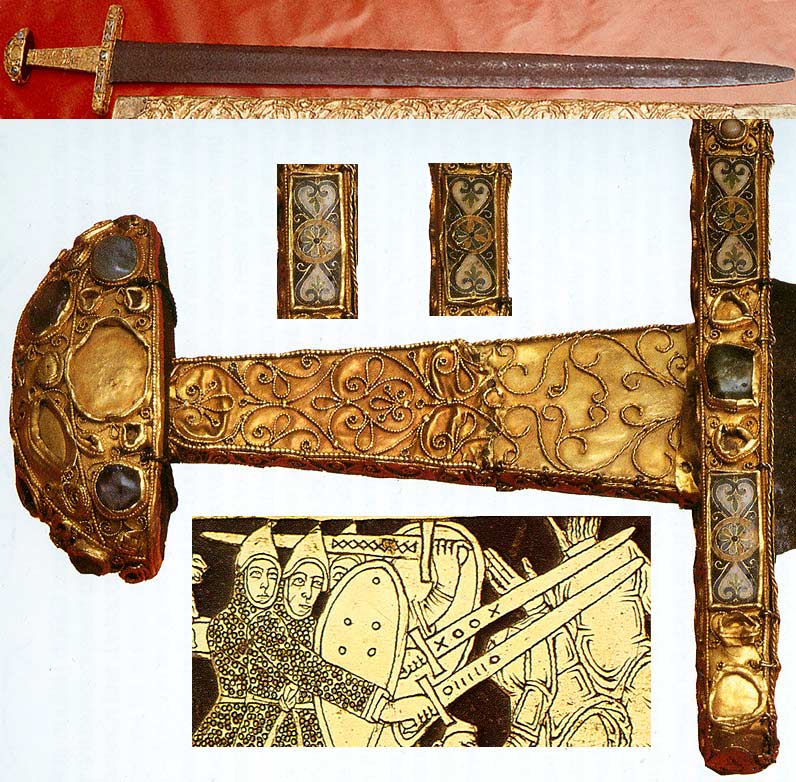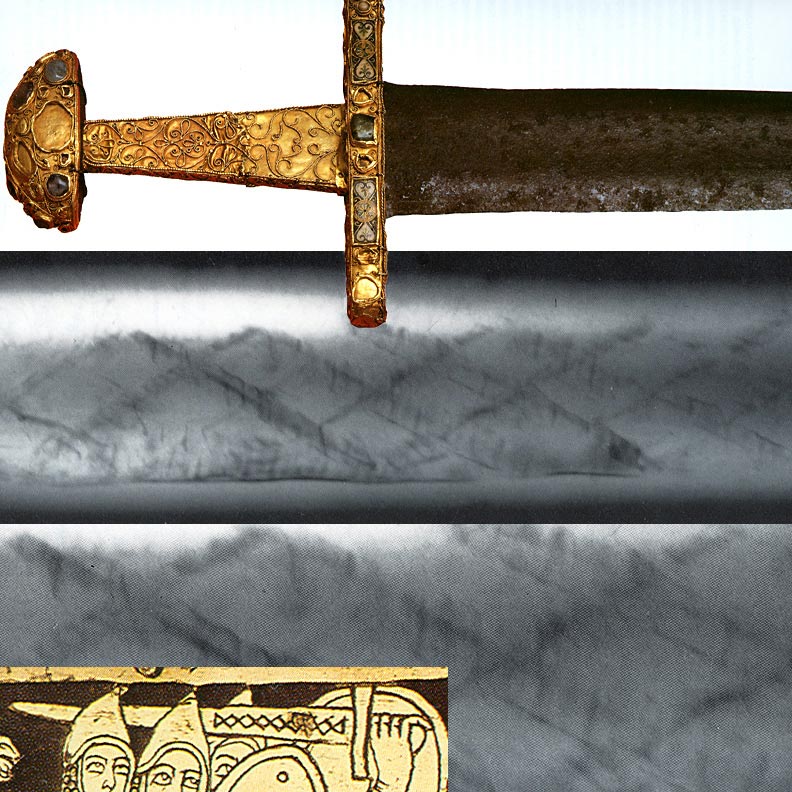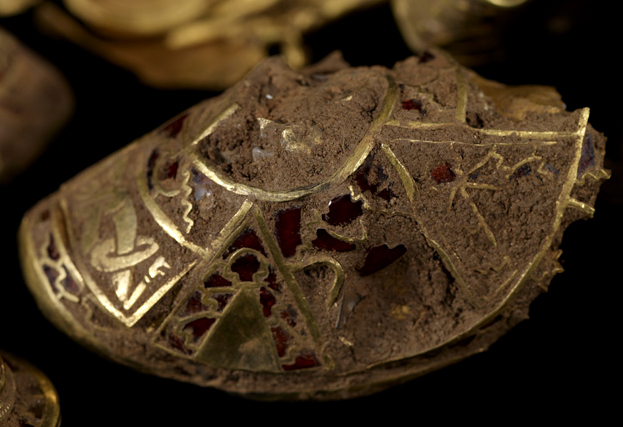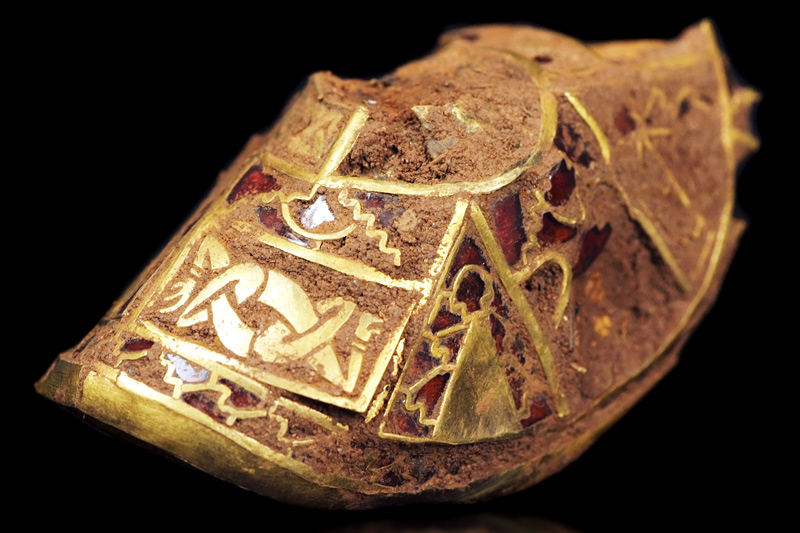| Author |
Message |
|
Nathan F
|
 Posted: Thu 27 Jan, 2011 10:51 am Post subject: viking Cloisonné hilts Posted: Thu 27 Jan, 2011 10:51 am Post subject: viking Cloisonné hilts |
 |
|
well basically i want to know where there any did they exist were they made and do you have any links i have been searching for ages with no luck and keep getting migration period swords can you help?
for here starts war carrion birds sing, and grey wolves howl
|
|
  |
 |
|
Russ Ellis
Industry Professional
|
 Posted: Fri 28 Jan, 2011 6:42 am Post subject: Posted: Fri 28 Jan, 2011 6:42 am Post subject: |
 |
|
I can't say definitively that they didn't exist but all the ones I've seen were earlier period and probably more tellingly Ian Pierce and other authors I've read to not have any examples in their books. Admittedly this is anecdotal...
TRITONWORKS Custom Scabbards
|
|
  |
 |
Kirk Lee Spencer

|
 Posted: Fri 28 Jan, 2011 10:12 am Post subject: Re: viking Cloisonné hilts Posted: Fri 28 Jan, 2011 10:12 am Post subject: Re: viking Cloisonné hilts |
 |
|
| Nathan F wrote: | | well basically i want to know where there any did they exist were they made...? |
Hi Nathan...
How about this...
The cloisonne is almost certainly a later encrustation... and the sword itself may be too late to be a Viking Age sword... But it is as close as I can get.
If I were looking for cloisonne on a Viking Age sword I might look further east in some of the museums in eastern Europe and Russia... left-overs from the cloisonned Hun swords.
Also consider that the visual effect of niello inlays of the Viking age Anglo Saxons swords is not too far from the garnet cloisonne of the earlier Anglo Saxon masterpieces... however the color scheme is different... black on silver rather than red on gold. I have attached a cloisonned brazil nut form from the Stratfordshire Horde... still not sure about it. However it is simply gorgeous art.
take care and God bless...
ks
 Attachment: 147.94 KB Attachment: 147.94 KB

From Domschatzkammer Essen Germany and is dated to the 11th century. The images come from "Damascus Steel" by Manfred Sachse
 Attachment: 137.75 KB Attachment: 137.75 KB

From Domschatzkammer Essen Germany and is dated to the 11th century. The Xray of the blade shows an iron inlay and the period depiction shows a similar pattern. The images come from "Damascus Steel" by Manfred Sachse
 Attachment: 144.16 KB Attachment: 144.16 KB

 Attachment: 140.01 KB Attachment: 140.01 KB

Two swords
Lit in Eden’s flame
One of iron and one of ink
To place within a bloody hand
One of God or one of man
Our souls to one of
Two eternities
|
|
  |
 |
|
Till J. Lodemann
|
 Posted: Fri 28 Jan, 2011 10:36 am Post subject: Posted: Fri 28 Jan, 2011 10:36 am Post subject: |
 |
|
Do you mean garnet cloisonné?
As far as I remember, it died out in europe in the late 7th century. Swordhilts and other objects by then were decorated by means of gold and silver plating and inlaying.
I think that was because all of the garnets were in fact imported from India (that's at least established for the merovingian cloisonné works) and in the course of the 7th century, the trade rout between India and the western world was severed by the rising of the arabic caliphate. Also the Byzantine Empire struggled with the rise of the Ummayyads, so the gold flow from Constantinople to the frankish realms ceased too.
Or are you talking about the enamel cloisonné work wich was also used in the viking age? AFAIK it was only used on strapends, buckles and scabbard sliders (and fibulas, of cause).
But why would you ask about viking (garnet) cloisonné? Maybe I have missed something.
|
|
  |
 |
|
Till J. Lodemann
|
 Posted: Fri 28 Jan, 2011 10:40 am Post subject: Posted: Fri 28 Jan, 2011 10:40 am Post subject: |
 |
|
Ah, thanks Kirk!
So there are some cases of enamel cloisonné on swords, at least.
|
|
  |
 |
James Cunniffe

|
 Posted: Fri 28 Jan, 2011 12:21 pm Post subject: Posted: Fri 28 Jan, 2011 12:21 pm Post subject: |
 |
|
Hi Nathan
I found one photo of a viking hilt ,date c700-1050 from Northern Europe in a book : Weapon ,A visual History of Arms and Armor. I would post a photo only for copyrights.Did you look at the Sutton Hoo Sword again not viking sword but it is a work of art.
Though the pen is mightier than the sword,
the sword speaks louder and stronger at any given moment.
|
|
  |
 |
|
Nathan F
|
 Posted: Fri 28 Jan, 2011 12:50 pm Post subject: Posted: Fri 28 Jan, 2011 12:50 pm Post subject: |
 |
|
no i mean enamel as i realise garnet was gone and is too pricey for me anyway plus enamel i know to be used just not on swords for example the Buddha bucket on the osberg ship had it.
for here starts war carrion birds sing, and grey wolves howl
|
|
  |
 |
|
E. Storesund
|
 Posted: Wed 02 Feb, 2011 6:39 am Post subject: Posted: Wed 02 Feb, 2011 6:39 am Post subject: |
 |
|
|
I believe I saw a picture in a Norwegian book not long ago of a sword pommel with "faux" cloisonné. I.e. silver inlay seemingly made to look in the same style. I'll have a look.
|
|
  |
 |
Jared Smith

|
 Posted: Wed 02 Feb, 2011 10:47 pm Post subject: Posted: Wed 02 Feb, 2011 10:47 pm Post subject: |
 |
|
Scandinavian work seems to be more famous for enamel cloisonne, but I don't study it. Arguments about origins of Merovingian era garnet cloissone have been asserted based on gemological analysis. This is not accepted as fact, since Scandinavians were master traders who certainly could have imported both the skills and the rarest quality dull/ blood red Pyrope garnets frequently seen in artifacts. (The native Scandinavian examples have a noticeable purple tint almandine, and don't fracture easily to create the shapes seen in actual examples.)
The known historical and present day sources of the red gems having appropriate chemistry and fracture properties are very limited; just North of Prague, and Sri Lanka. An article I read yesterday "Mineralogy of the Louvres Merovingian Garnet Cloisonnes Jewelry: Origins of the gems of the First Kings of France", Francois Farges...has a pretty thorough discussion of the trace elements, examinations, and methods of determining where the distinguishing gems come from. I have a copy of the above article, and have read others where the amalgum, alloy chemistry, and gemological qualities were also analyzed. All of these I have read over the past few years tend to zero in on Bohemian, Burgundian, and Lombardic areas bordering just South and East of Germany as known historical regions where availability of the gems having the correct chemistry, and methods are known to have been used. These tend to leave me with the impression that even the Merovingians either commissioned the works or imported a great deal of the materials. Most puzzling, is that the extreme rarity and high quality of gems is consistent despite the fact that no known method of distinguishing them to the degree measured is presently known to have existed historically before 9th century.
Absence of evidence is not necessarily evidence of absence!
|
|
  |
 |
Paul Hansen

|
 Posted: Mon 07 Feb, 2011 12:37 pm Post subject: Posted: Mon 07 Feb, 2011 12:37 pm Post subject: |
 |
|
I don't think there were any garnet cloisonné decorated swords left in the Viking Age.
On the other hand, some saga's mention sword beads, which went out of style even earlier....
Regarding the origins of garnets, I have not studied Arrhenius' "Merovingian Garnet Jewelery" in much detail, but as I remember, she thinks that the Bohemian garnets were of superior quality to the ones from the Indian sub-continent.
|
|
  |
 |
|
|

